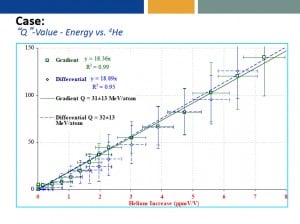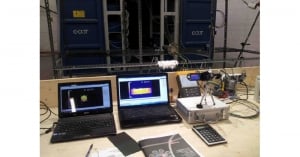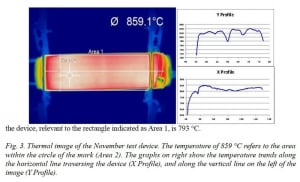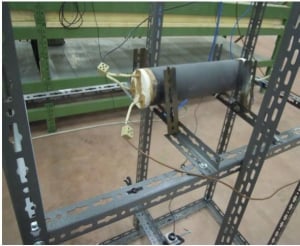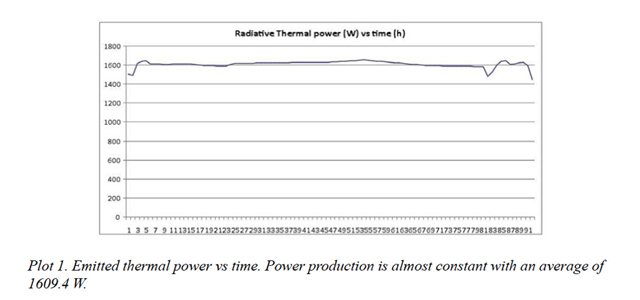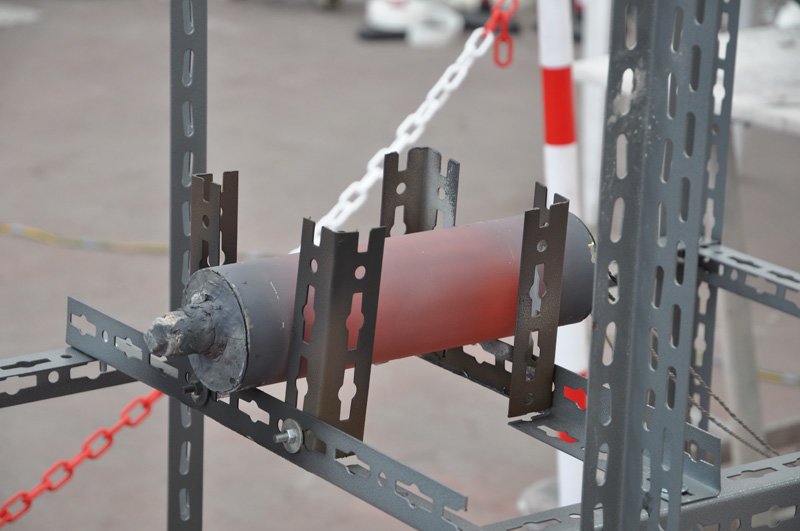Multiple independent labs are racing to produce a commercial product based on the Fleischmann-Pons Heat Effect (FPHE), most working quietly in their labs. But since the public demonstration of Andrea Rossi‘s E-Cat in January 2011, we’ve witnessed on the global theater the grueling process of actualizing a revolutionary technology.
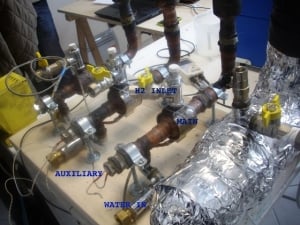
The earliest prototypes were fueled by hydrogen gas from a canister connected to the unit. For obvious reasons, the danger of hydrogen tanks in a domestic environment present a problem, and having the fuel pre-loaded inside the new E-Cat HT removes a huge liability.
But a pre-loaded fuel cartridge also makes a compact device easy to use.
Previous announcements have set the life for a single charge at six months, after which time the contents can be recycled and a new one installed. As this first generation of new-energy technology filters out to the public, we can expect much longer life-cycles in the future.
How is this fuel pre-loaded into the less-than-a-gram nickel-powder mixture? The answer is proprietary at the moment. But what is possible?
Perhaps a material that absorbs hydrogen and then releases it slowly is used. Metallic-hydrides can do exactly that. Could there be amongst the nickel-powder another transition metal that serves this function?
While we wait to see what’s next for the E-Cat, there are others in the field that have discovered the pre-loaded reactor benefits, each having different designs.
Pre-loaded solid wire works to make heat
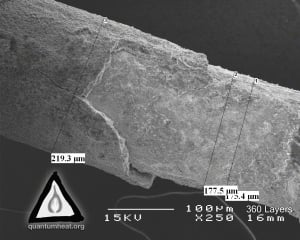
The group showed the results of loading hydrogen in their wire and how it affected resistivity and temperature. Stunning scanning electron microscope (SEM) images reveal close-up views of the metal and its bumpy surface.
Separating loading from activation for Pd-D systems solved by pre-loading
Pre-loading of hydrogen has also benefited palladium-deuterium (Pd-D) systems, helping to hasten initiation of the reaction, which can sometimes take weeks or even months to begin. Waiting so long for a reaction to occur makes data acquisition burdensome, and discoveries difficult.
Ideally, multiple cells would run at the same time, allowing several variables to be monitored and determined simultaneously. At one point, Drs. Fleischmann and Pons were running up to 32 cells, an expensive and still time-dependent undertaking.
SRI International experimented with pre-loading of hydrogen in fine wires as described in Calorimetric Studies of the Destructive Stimulation of Palladium and Nickel Fine Wires [.pdf]. From the paper, a description of how they did it:
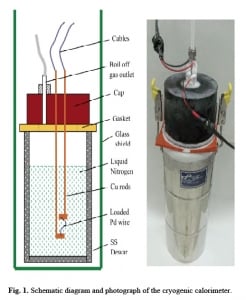
2. Sealing. The atomic loading of H or D can be sealed inside the Pd lattice for extended periods (several hours or days) with the addition of very small concentrations of Hg2SO4 to the SrSO4 electrolyte and continued cathodic electrolysis [8,9]. The deposited Hg at monolayer coverage is a highly effective poison for hydrogen atom recombination, effectively preventing= desorption by inhibiting molecule formation.
The outcome?
The results show clearly that excess energy is generated both from Pd and Ni wires loaded either with deuterium or natural hydrogen5. However, data from Pd/D codeposited onto highly loaded Pd wires (solid triangles) sit on top of the plot, indicating that this category of wires generates the most excess heat. Interestingly, the Ni codeposited system also yields significant amounts of excess heat.
Pre-loaded NANOR devices can be electrically driven
Separating the long loading times from the activation of the reaction was achieved by Dr. Mitchell Swartz of JET Energy, Inc. with his nano-composite ZrO2-PdNi-D cell that is pre-loaded with hydrogen fuel creating a “reproducible active nanostructured cold fusion/lattice-assisted nuclear reaction (CF/LANR) quantum electronic device.”
In the paper Energy Gain From Preloaded ZrO2-PdNi-D Nanostructured CF/LANR Quantum Electronic Components [.pdf] by Mitchell Swartz, Gayle Verner, and Jeffrey Tolleson, the authors write:
“The importance is they enable LANR devices and their integrated systems to now be fabricated, transported, and then activated. They are the future of clean, efficient energy production.”
A sixth-generation NANOR was publicly demonstrated in the office of Dr. Peter Hagelstein on the campus of Massachusetts Institute of Technology (MIT) during the 2012 IAP Cold Fusion 101 course, operating from January 30 to mid-May. Swartz also described the technology in the 2013 IAP short course captured on video by Jeremy Rys.
Designed to run at low-power due to safety considerations for a multi-month demonstration on a public campus, “over several weeks, the CF/LANR quantum device demonstrated more reproducible, controllable, energy gain which ranged generally from 5 to 16 [14.1 while the course was ongoing].”
With the core smaller than 2 centimeters containing less than a gram of active material, this device produced LANR excess power density “more than 19,500 watts/kilogram of nanostructured material.”
From the paper, Swartz describes the “proprietary self-contained CF/LANR quantum electronic component, called a two terminal NANOR™-type of LANR device”:
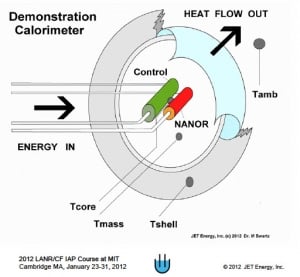
“Loaded are isotopes of hydrogen -protons, protium, deuterons, deuterium, and hydrogenated organic compounds, deuterated organic compounds, D2, H2, deuterides and hydrides. Precisely for these NANOR-type LANR devices, the fuel for the nanostructured material in the core, is deuterium.”
“The preloaded nanostructured material is placed into the hermetically sealed enclosure which is specially designed to withstand pressure, minimize contamination, enable lock on of wires connecting to it. The enclosure is tightly fit with the electrodes.”
Described in the paper, the production of the preloaded core material involves “preparation, production, proprietary pretreatment, loading, post-loading treatment, activation, and then adding the final structural elements, including holder and electrodes.”

Very pure materials are also required. “Contamination remains a major problem, with excess heat potentially devastatingly quenched,” the paper states.
The ratios of the NANOR’s composite elements are “in the range of Zr (~60-70%), Ni (0-30%), and Pd (0-30%) by weight, with the weights being before the oxidation step, and several later additional preparation steps. The additional D2 and H2 yield loadings (ratio to Pd) of up to more than 130% D/Pd.”
After several bakes, eventually an oxidized zirconia “surrounds, encapsulates, and separates the NiPd alloy into 7-10 nm sized ferromagnetic nanostructured islands located and dispersed within the electrically insulating zirconia dielectric.”
“Each nanostructured island acts as a short circuit element during electrical discharge. These allow deuterons to form a hyperdense state in each island, where the deuterons are able to be sufficiently close together.”
The latest Series VI NANORs have had energy gains beyond 30.
More than basic science, it’s an engineering development
Pre-loaded core reactors have “a decreased size, decreased response time, improved and dual diagnostics, and increased total output energy density.”
They are compact, portable and durable. Suitable for small power needs, they can respond on-demand with scalable power.
It’s a ragged course to a next-generation clean energy technology. Even as the science is still uncertain, the new pre-loaded hydrogen reactors are an engineering development that brings us closer to that goal.



